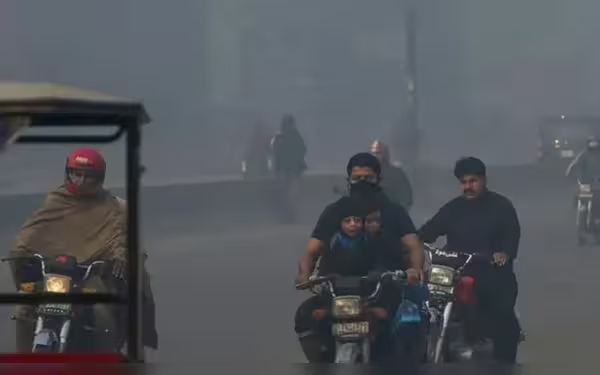Saturday, November 16, 2024 06:50 PM
Punjab Government Launches Roadmap to Address Smog Crisis
- AQI in Punjab reaches unhealthy level of 151.
- New roadmap targets emissions reduction and public awareness.
- Collaboration with experts to monitor air quality.
 Image Credits: en.dailypakistan.com.pk
Image Credits: en.dailypakistan.com.pkPunjab government unveils a roadmap to combat smog crisis as AQI hits 151, focusing on emissions reduction and public awareness.
In recent years, the air quality in Punjab has become a pressing concern, particularly during the winter months. The Air Quality Index (AQI) has reached alarming levels, with the latest readings hitting 151, indicating unhealthy air conditions. This deterioration in air quality is primarily attributed to a combination of factors, including increasing vehicular emissions, industrial discharges, and seasonal weather patterns that trap pollutants close to the ground. As a result, the government of Punjab has unveiled a comprehensive roadmap aimed at combating the worsening smog crisis that plagues the region.
The newly introduced plan is structured in phases, with each phase targeting specific aspects of the smog issue. Phase 3 of the roadmap is particularly crucial as it focuses on minimizing the severity of smog during the peak season, which typically spans from October to February. During these months, the combination of cooler temperatures and stagnant air creates a perfect storm for smog formation, leading to health risks for the population.
To tackle this issue effectively, the Punjab government is implementing a series of measures designed to reduce emissions from both vehicles and industries. This includes stricter regulations on vehicle emissions, promoting the use of public transport, and encouraging industries to adopt cleaner technologies. Additionally, public awareness campaigns are being launched to educate citizens about the importance of reducing their carbon footprint and the steps they can take to improve air quality.
Moreover, the government is collaborating with environmental experts to monitor air quality more closely and to develop innovative solutions tailored to the unique challenges faced by Punjab. This proactive approach is essential, as the health of the population is at stake. Poor air quality can lead to serious health issues, including respiratory problems, heart disease, and other chronic conditions.
While the smog crisis in Punjab presents significant challenges, the government's roadmap offers a glimmer of hope. By focusing on reducing emissions and raising public awareness, there is potential for improvement in air quality. It is crucial for all stakeholders, including citizens, industries, and government bodies, to work together in this endeavor. Only through collective action can we hope to breathe cleaner air and ensure a healthier future for the people of Punjab.













